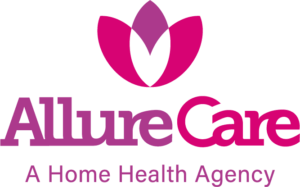 What is a Primary Caregiver?
What is a Primary Caregiver?
A primary caregiver is the title given to anyone that is primarily (first-up) responsible for caring and providing for another living thing. A primary caregiver could be; the sole available person caring for another, the person who cares for another in the primary role (and has additional support people) the individual who lives with the person that needs cared for. Ultimately, a primary caregiver is responsible for making sure that the person they’re caring for gets the support and care they need.
If you’re the primary caregiver for a differently abled person or an aging individual (which technically is all of us!) then at one time or another, you’ve probably had difficulty getting them to be active. My younger sister is differently abled and it’s very much a challenge for my mom to even get her out of her room some days! Here are a few easy-to-implement things that will at least loosen up the muscles and help prevent complete complacency.
- Range of Motion Activities. this is a medical term for exercises that help you move around. Every person should be doing some type of moving around several times a day. This is no different if you’re fully able-bodied, differently abled, or completely dependent on another person. You can find great lists of exercises here and here. Always support any joint you’re working with and never exceed what is comfortable! Make it consistent (e.g. before breakfast and dinner)
- Make it more enjoyable. “Dress up” your durable medical equipment with functional or fun things, like these wheelchair hubcaps we love (my sister has Philadelphia Eagles ones!).
- Open the blinds and windows. Let that fresh air in. Find a place where sitting in the sun indoors is possible. Go outside when you can
- Consider a pet. A small dog is an excellent reason to have to walk outside. A cat is a great reason to get up and move around, even if it’s just to feed them and change the litter. Be careful about bending over. Putting the litter and food containers on a flat elevated surface can make these tasks easier.
- Have a consistent visitor. Even if it’s just once a week or once every two weeks, having a visitor come over for a walk or for a virtual chair yoga class will make it more enjoyable and make you (and your loved one) more likely to just skip being active.
- Put on music. Every day. Whatever kind you like, get it going. It makes you more likely to get moving and it lifts spirits. Consider a Google Home or Alexa (which you can integrate into your home more, or just use as a speaker!).
- Don’t ever sit for more than 2 hours at a time. Always be sure you’re shifting every two hours AT A MINIMUM. If there is an area of redness or your loved one’s fatty tissue is minimal (and thus the bone is close to the surface of the skin), then moving more frequently will help prevent pressure ulcers.
- Invest in the right cushions and adaptive equipment. Gel cushions for chairs and wheelchairs go a long way when you spend a lot of time sitting.
- Virtual yoga. Exercise wherever you are! Honor Yoga has a great virtual class option so you can take your exercise with you while you’re on the go.

Posted with permission of Silver Lining Home Healthcare (silverlininghealthcare.com)